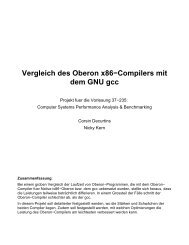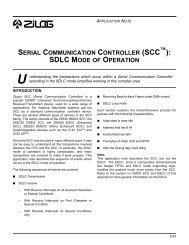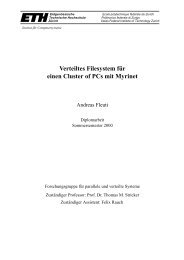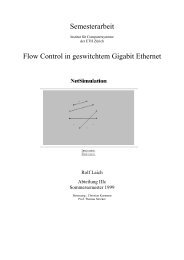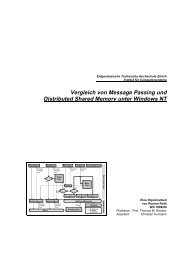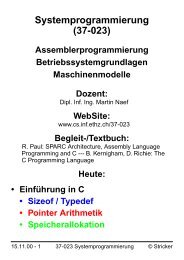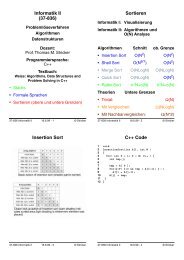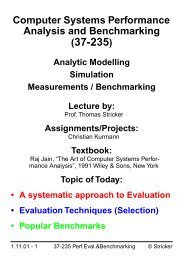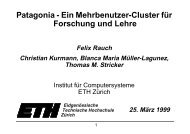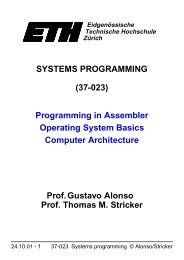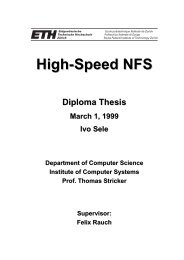Create successful ePaper yourself
Turn your PDF publications into a flip-book with our unique Google optimized e-Paper software.
<strong>SCC</strong>/E<strong>SCC</strong> User’s Manual<br />
Zilog <strong>SCC</strong><br />
SPECIAL MODES<br />
(LOCAL, LOOPBACK, DPLL, MANCHESTER)<br />
Q How are the Local, Loopback, and Auto Echo<br />
modes implemented<br />
A. The TxD and RxD pins are connected through drivers.<br />
If both modes are simultaneously enabled, then Auto<br />
Echo overrides.<br />
Q. Can the <strong>SCC</strong> transmit when the Auto Echo mode is<br />
enabled<br />
A. No, the transmitter is logically disconnected from the<br />
TxD pin.<br />
Q. Can the Digital Phase Lock Loop (DPLL) be used<br />
with NRZ<br />
A. The DPLL simply generates the receive clock which is<br />
the same for both NRZ and NRZI.<br />
Q. Do you have to use the DPLL with NRZI and FM encoding<br />
A. If the DPLL is not used, a properly phased external<br />
clock must be supplied.<br />
Q. What is the error tolerance for the DPLL<br />
A. The DPLL can only tolerate a + or - 1/32 deviation in<br />
frequency, or about 3%.<br />
Q. Can you receive and transmit between two channels<br />
on the same <strong>SCC</strong> using the DPLL to generate<br />
both the transmit and receive clocks<br />
A. To transmit and receive using the same clock, you<br />
need to divide the transmit clock by 16 or 32 to be the<br />
same rate for transmitting and receiving, because the<br />
DPLL requires a divide-by-16 or -32 on the receiver,<br />
depending on the encoding. An external divide-by-16<br />
or -32 is required, and can be connected by outpouring<br />
the bit rate generator on the /TRxC pin, through the external<br />
divide circuit, and back in the /RTxC pin as an<br />
input to the transmitter.<br />
Q. How fast will Manchester be decoded<br />
A. The <strong>SCC</strong> can decode Manchester data by using the<br />
DPLL in the FM mode and programming the receiver<br />
for NRZ data. Hence, the 125K bit/s is the maximum<br />
rate for decoding at 8MHz <strong>SCC</strong>. A circuit for encoding<br />
Manchester is available from Zilog.<br />
Q. When will the Time Constant be loaded into the<br />
BRG counter<br />
A. After a S/W reset or a Zero Count is reached.<br />
Q. How to run NRZ data using the DPLL<br />
A. Use NRZI for DPLL (WR14) but set to NRZ (WR10).<br />
INTERNAL TIMING<br />
Q. When does data transfer from the transmit buffer<br />
to the shift register<br />
A. About 3 PCLK’s after the last bit is shifted out.<br />
Q. How long does it take for a write operation to get<br />
to the transmit buffer<br />
A. It takes about 5 PCLK’s for the data to get to the buffer.<br />
Q. What is Valid Access Recovery Time<br />
A. Since WR/ and RD/ (AS/ and DS/ on the Z8030) have<br />
no phase relationship with PCLK, the circuitry generating<br />
these internal control signals must provide time for<br />
metastable conditions to disappear. This gives rise to<br />
a recovery time related to PCLK.<br />
Q. How long is Valid Access Recovery Time<br />
A. On the NMOS <strong>SCC</strong>, the recovery time is 4 PCLK’s,<br />
while on the CMOS <strong>SCC</strong>, the recovery time is 3-3.5<br />
PCLK’s.<br />
Q. Why does the Z8030 require that the PCLK be “at<br />
least 90% of the CPU clock frequency for Z8000“<br />
A. If the clocks are within 90%, then the setup and hold<br />
times will be met. Otherwise, the setup and hold times<br />
must be met by the user.<br />
Q. Does Valid Access Recovery Time apply to all successive<br />
accesses to the <strong>SCC</strong><br />
A. Any access to the <strong>SCC</strong> requires that the recovery time<br />
be observed before a new access. This includes reading<br />
several bytes from the receive FIFO, accessing<br />
separate bytes on two different channels, etc. When<br />
using DMA or block transfer methods, the recovery<br />
time must be considered.<br />
Q. Do the DMA request and wait lines on the <strong>SCC</strong> take<br />
the Valid Access Recovery time into account before<br />
they make a request<br />
A. No, they are not that intelligent. The user must take<br />
this into account, and program the DMA accordingly.<br />
For example, by inserting wait states during the memory<br />
access between <strong>SCC</strong> accesses, which will lengthen<br />
the time in between <strong>SCC</strong> accesses, or by requiring<br />
the DMA to release the bus between accesses to the<br />
<strong>SCC</strong>, to prevent simultaneous data requests from two<br />
channels from violating the recovery time.<br />
Q. What happens if Valid Access Recovery Time is<br />
violated<br />
A. Invalid data can result.<br />
7-4



